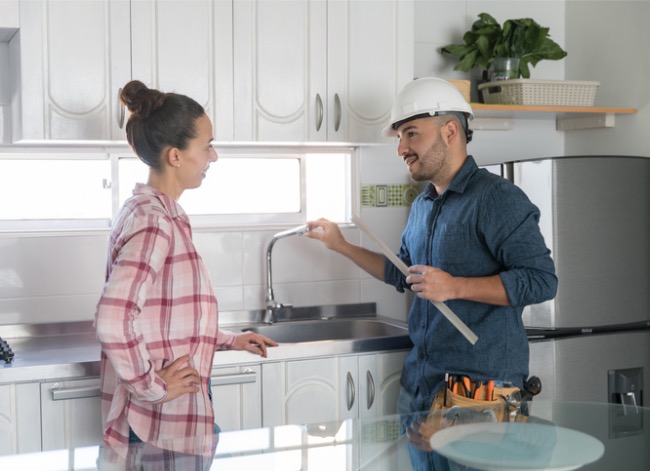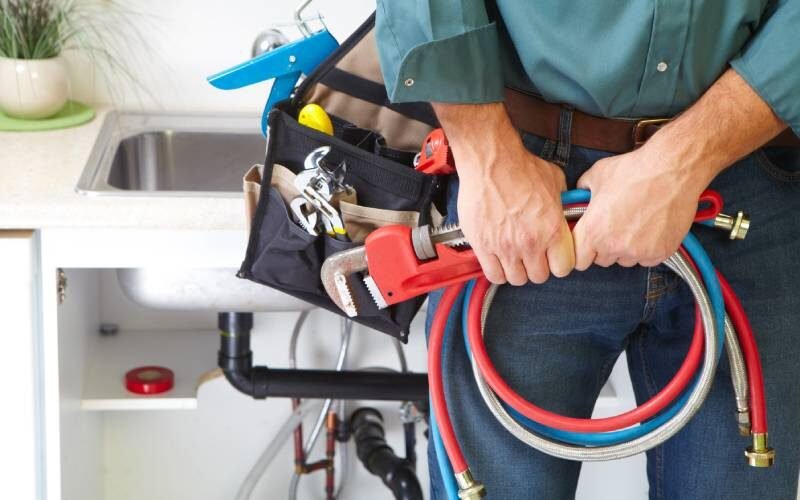Plumbing is one of the most crucial yet overlooked aspects of home renovation. Whether you’re updating a bathroom, remodeling a kitchen, or adding a new space, poor planning can lead to costly mistakes and unexpected delays. Before you start, it’s essential to understand how plumbing impacts your design, functionality, and overall budget. From checking existing pipes to choosing the right fixtures, every decision matters. Consulting with a professional plumber can help you avoid common pitfalls and make informed choices.
Why Plumbing Is a Key Factor in Any Home Renovation
Plumbing isn’t just about pipes and fixtures—it’s the backbone of a functional, efficient home. A renovation is the perfect time to upgrade outdated plumbing, improve water efficiency, and future-proof your home against leaks, pressure issues, and costly repairs. Poor planning can lead to expensive rework, design limitations, and even structural damage. A well-designed plumbing system enhances daily convenience, increases home value, and supports modern layouts, from open-concept kitchens to spa-like bathrooms.
It’s easy to focus on cabinets, tile, and lighting while underestimating how plumbing impacts usability and efficiency. Ever seen a stunning kitchen where the sink is awkwardly placed, or the dishwasher door blocks a cabinet? Poor plumbing planning leads to frustrating layouts. Upgrading plumbing now ensures your home is ready for smart water systems, luxury fixtures, or an extra bathroom down the line. Ignoring it is like putting premium gas in a car with a failing engine—it looks great but won’t run smoothly.
What to Check in Your Plumbing Before Remodeling
Before tearing down walls or selecting high-end fixtures, inspect your plumbing system. Check pipe material and age—galvanized steel or polybutylene pipes should be replaced. Weak water pressure could indicate clogged pipes or outdated supply lines, while slow drains or gurgling sounds suggest improper venting or blockages. Look for leaks under sinks, behind walls, and in crawl spaces that could cause major issues post-renovation.
Turn faucets on and off quickly—if you hear banging, that’s water hammer, which can damage your plumbing over time. Planning on a bigger showerhead, a soaking tub, or multiple sinks? Ensure your water heater and supply lines can handle the increased demand. If you’re in an older home, consider a camera inspection of your sewer line to check for clogs or collapses that could derail your renovation later. Also, be on the lookout for mismatched pipes or DIY fixes from previous owners that might not be up to code.

How Plumbing Upgrades Improve Design and Functionality
Plumbing influences more than just where you place a sink—it shapes layout, aesthetics, and user experience. Moving supply lines and drains enables open-concept kitchens and reconfigured bathroom designs. Features like freestanding tubs, rain showers, and smart fixtures often require upgraded water lines and drainage.
Newer plumbing systems support eco-friendly designs with low-flow fixtures, greywater recycling, and tankless water heaters. Upgrading to quieter, pressure-balanced pipes eliminates loud gurgling or water hammer. Adjusting pipe placement can open up design possibilities, like floating vanities or wall-mounted toilets. Thoughtful upgrades—such as floor drains in laundry rooms or hidden recirculating pumps for instant hot water—make everyday life easier.
Common Plumbing Mistakes to Avoid During Renovations
Overlooking proper ventilation can lead to gurgling drains, water backup, and sewer gas odors. High-end showers and multiple fixtures require sufficient pressure and flow—undersized pipes won’t cut it. Poor planning can leave the last person in the shower with cold water when someone flushes the toilet, but pressure-balancing valves prevent this issue.
Improper drainage slopes can cause slow water flow or clogs. Concealing pipes behind immovable features without access panels makes future repairs a nightmare. Moving supply or waste lines without professional input can lead to leaks or flooding. More fixtures mean more demand—if your water pressure was already weak, adding features will make it worse. And while concealing everything behind beautiful tile may seem appealing, hidden access panels ensure maintenance isn’t a hassle.
Planning Your Bathroom or Kitchen Layout with Plumbing in Mind
Whenever possible, work with existing plumbing to reduce costs and complexity. Keeping sinks, toilets, and drains in the same general location simplifies renovations. If your layout includes multiple fixtures using hot water simultaneously, consider larger supply lines or a tankless water heater.
In kitchens, the sink, fridge, and stove should form a triangle for maximum efficiency. Poor placement—like putting the dishwasher too far from the sink—can make daily tasks frustrating. In bathrooms, stacking water and waste lines vertically between floors minimizes costs and prevents inefficient plumbing routes. Getting plumbing right from the start ensures smooth functionality, allowing you to focus on design details.

Plumbing Permits and Regulations Homeowners Should Know
Major plumbing work—such as relocating pipes, adding fixtures, or replacing water heaters—typically requires a permit and inspection. Swapping out fixtures in the same location may not. Plumbing codes regulate pipe sizing, venting, and water conservation requirements, and ignoring them can lead to leaks, water damage, or even insurance issues.
Some areas require backflow preventers to protect the water supply from contamination, while others have water conservation laws limiting flow rates for faucets, showerheads, and toilets. If you live in a condo or HOA-controlled community, additional approvals may be necessary. In regions prone to earthquakes or freezing temperatures, extra pipe supports or insulation may be required. Unpermitted plumbing work can create resale headaches, as buyers and lenders will demand proof it meets code.
Skipping permits isn’t just risky—it could cost you thousands if you have to redo work later. Proper planning and compliance ensure your renovation runs smoothly and adds lasting value to your home.




